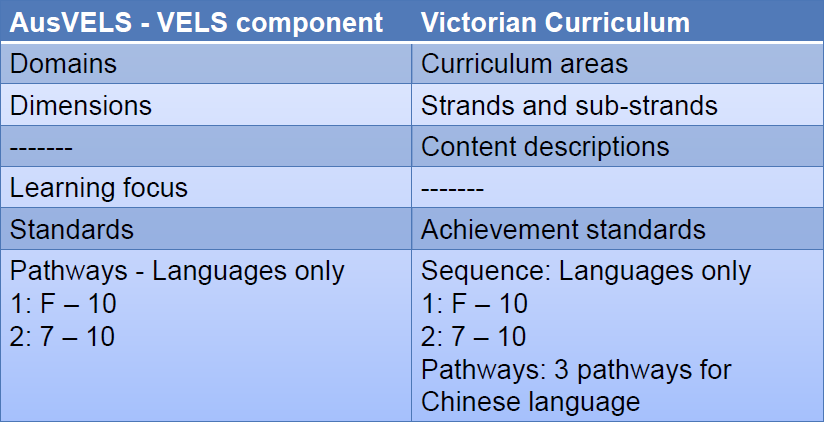The Victorian Curriculum and Assessment Authority (VCAA) has provided information about the transition to the Victorian Curriculum F-10 in 2017, covering:
For further details, see Victorian Curriculum F–10 (Revised curriculum planning and reporting guidelines, December 2015).
Student learning
.png)
Reporting
Schools have more flexibility to determine how they report on student achievement to parents/carers, including the timing, frequency and format of the reports.
Curriculum
Curriculum:
The Victorian Curriculum F–10 is structured as a continuum across levels of learning achievement not years of schooling. This enables the development of targeted learning programs for all students, where the curriculum is used to plan in relation to the actual learning level of each student rather than their assumed level of learning based on age.
Each curriculum area includes content descriptions explaining what is to be taught and achievement standards describing what students are able to understand and do. The achievement standards are provided in 11 levels for English and Mathematics or in five or six bands for all the other learning areas and capabilities.
Schools should report student achievement against the set of achievement standards set out in the eight learning areas and four capabilities of the Victorian Curriculum F–10, consistent with the whole-school teaching and learning plan.
It is not mandatory for schools to report each semester on each curriculum area.
English, Maths and Science
Schools report student progress against age-related expected level of achievement for every student every year in:
This can be varied where an exception has been determined for an individual student by the school in partnership with parents/carers.
Health and Physical Education
Schools report student achievement, twice a year, against the achievement standards in Physical Education. Health is reported on whenever it is taught within the two year band of schooling, in accordance with the whole-school teaching and learning plan.
Foundation to Year 2
In Foundation (F) to Year 2, schools report on:
These areas all have a standard at Foundation.
In the early years of schooling, schools may choose to structure teaching and learning programs around the five outcomes of the Victorian Early Years Learning and Development Framework (VEYLDF).
Foundation is also referred to as 'prep' in Victorian schools; short for 'preparatory'.
Years 3 through 10
Students engage in a broad education and begin to plan their senior secondary program of study.
Schools report on student achievement during each two year band of school, in accordance with their whole school teaching and learning plan and sector specific requirements:
Note: Years 9–10 can be visual or performing.
Exceptions:
5-point scale
Achievement must be displayed using a 5-point scale.
Best practice
Schools should ensure their reports for each student:
Catholic education
Schools in the Catholic education sector have:
See Minimum and additional reporting for Victorian students.
English as an Additional Language (EAL)
English as an Additional Language (EAL) is:
See the EAL section in Important aspects of the Victorian Curriculum F-10.
Comparison of terminology

Last modified: 20/07/2017 10:34:24 AM
© 2017 Synergetic Management Systems. Published 20 July 2017.